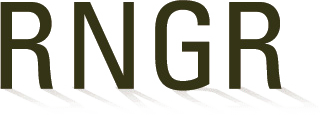
Agrostis (hyemalis)
|
Joel L. Douglas USDA NRCS - Coffeeville/Jamie L. Whitten Plant Materials Center 2533 County Road 65 Coffeeville, Mississippi 38922-2652 (601) 675-2588 (601) 675-2369 (fax) jdouglas@ms.nrcs.usda.gov http://plant-materials.nrcs.usda.gov/mspmc |
|
| Family Scientific Name: | Poaceae | ||
|---|---|---|---|
| Scientific Name: | Agrostis hyemalis (Walt.) B.S.P. | ||
| Common Name: | Winter bentgrass, Ticklegrass | ||
| Species Code: | AGHY | ||
| General Distribution: | The species appears to be distributed throughout the Eastern half of the US and the Great Plains. This grass prefers fairly wet soils. | ||
| Propagation Goal: | plants | ||
| Propagation Method: | seed | ||
| ProductType: | Propagules (seeds, cuttings, poles, etc.) | ||
| Time To Grow: | 0 | ||
| Propagule Collection: | Collected in Natchez Trace Parkway (actual collection location was not noted - designated collection area was the lower section of the Natchez Trace Parkway, from around Jackson, Mississippi to the terminus in Natchez, Mississippi) by B.B. Billingsley, Jr. in 1990. | ||
| Propagule Processing: |
Seed Processing: Direct combined seeds and cleaned using an air screen cleaner. Seeds/Kg: 18,700,000. Germination: In 1992=48% and in 1993=44%. Purity: In 1992=97% and in 1993=98%. |
||
| Pre-Planting Treatments: | Seed Treatments: None. A. stolonifera and A. tenuis require stratification (Young and Young, 1986), but this species germinated without this treatment. Seeds probably require light for germination; however, no testing was done to determine this. | ||
| Growing Area Preparation/ Annual Practices for Perennial Crops: |
Propagation Environment: Field grown. Seed Propagation Method: Broadcasting in summer on the surface of a mowed field. |
||
| Establishment Phase: |
Sowing Date: August to September. Emergence and Date: Seeds germinate in the fall. Sowing/Planting Technique: Seeds broadcast on the soil surface. Planting rate used was approximately 0.84 kilograms PLS per hectare (0.75 pound PLS per acre). |
||
| Active Growth Phase: | Rapid Growth Phase: Plants begin to elongate to form flowering stalks in early spring. | ||
| Harvesting, Storage and Shipping: |
Harvest Date: Mid-May. Seed heads will naturally break off of the plant when dry and seeds will dehisce as the stalks tumble in the wind. Total Time to Harvest: 9 months. |
||
| Length of Storage: | <b>Storage Duration: </b> 3-5 years. | ||
| Other Comments: | Estimated seed production was 112 kg perhectare (100 lb. per acre). Seeds produced during the two production years were in excess of that needed for planting. | ||
| References: | Young, J.A. and Young, C.G. 1986. Collecting, processing and germinating seeds of wildland plants. Timber Press, Portland, OR. 236 p. | ||
Citation:
Grabowski, Janet M.. 2001. Propagation protocol for production of Propagules (seeds, cuttings, poles, etc.) Agrostis hyemalis (Walt.) B.S.P. plants USDA NRCS - Coffeeville/Jamie L. Whitten Plant Materials Center Coffeeville, Mississippi. In: Native Plant Network. URL: https://NativePlantNetwork.org (accessed 2025/11/19). US Department of Agriculture, Forest Service, National Center for Reforestation, Nurseries, and Genetic Resources.



